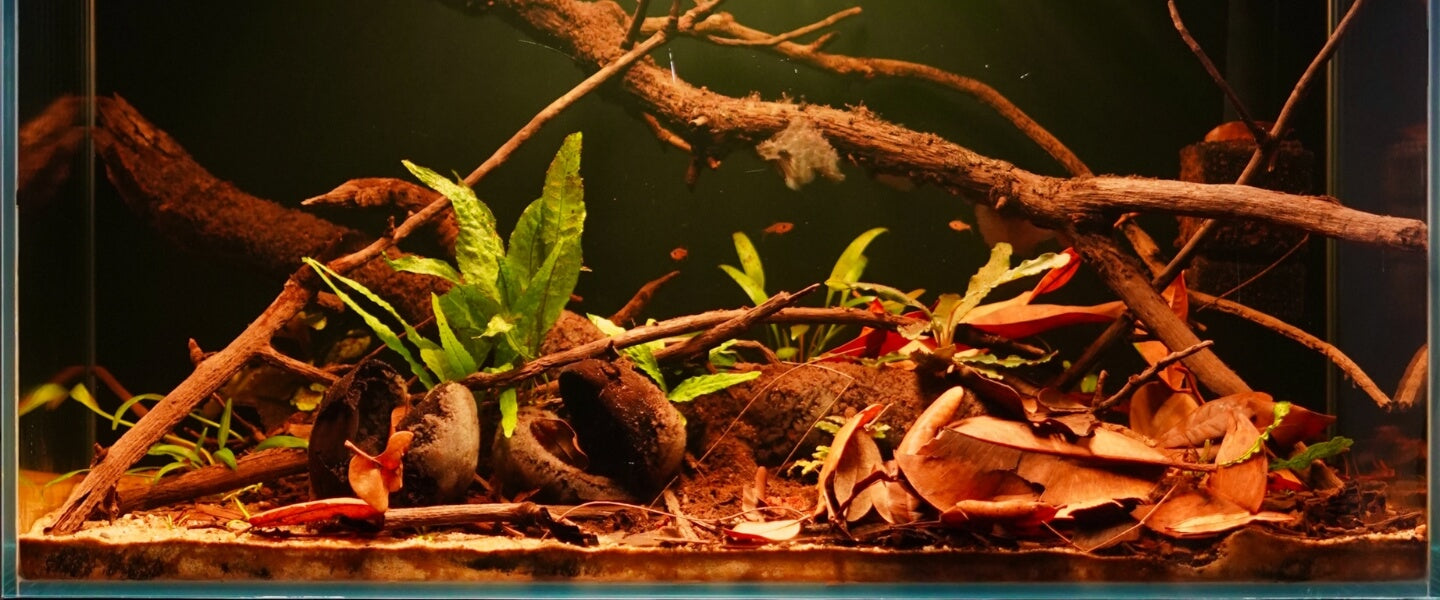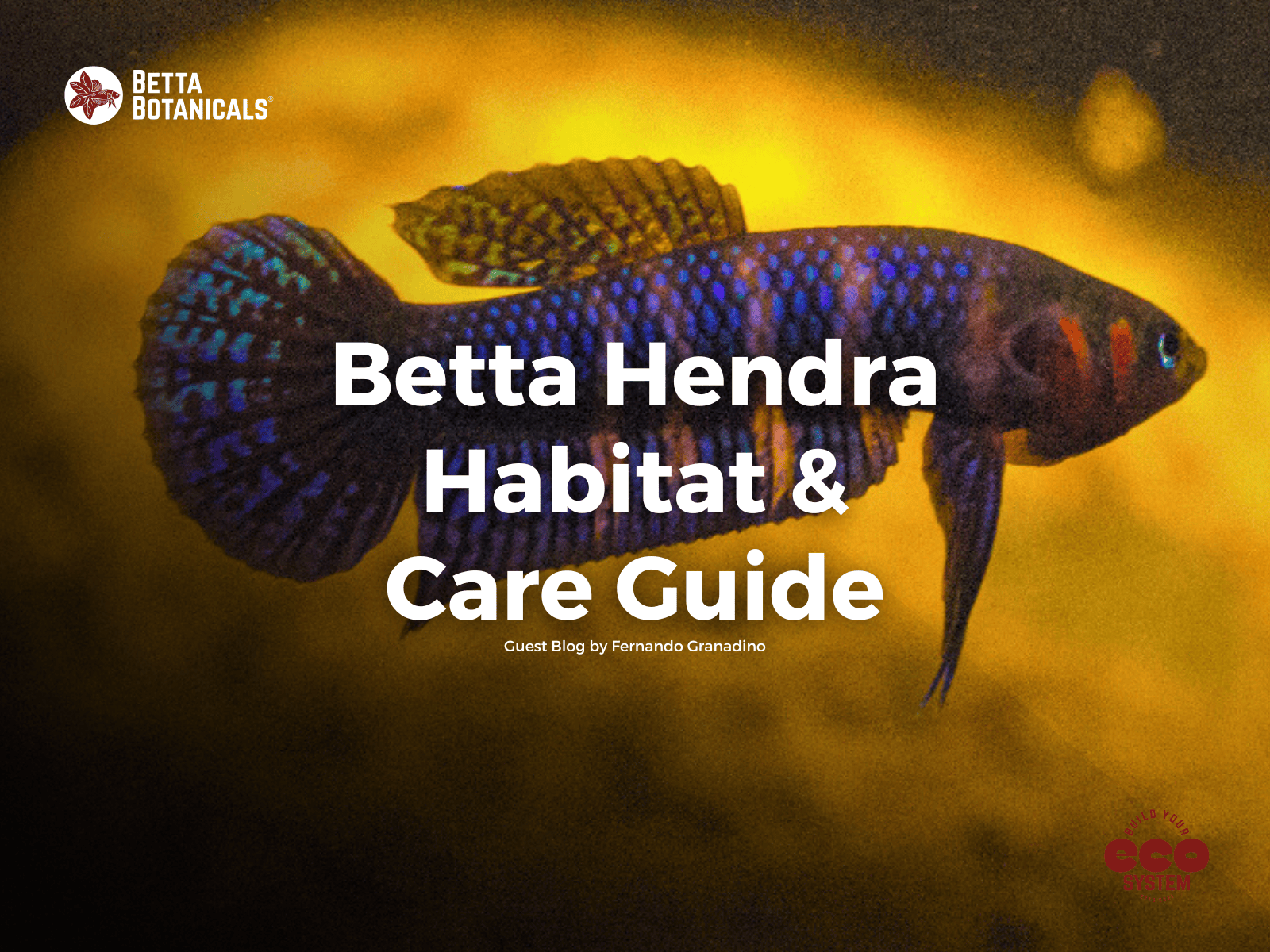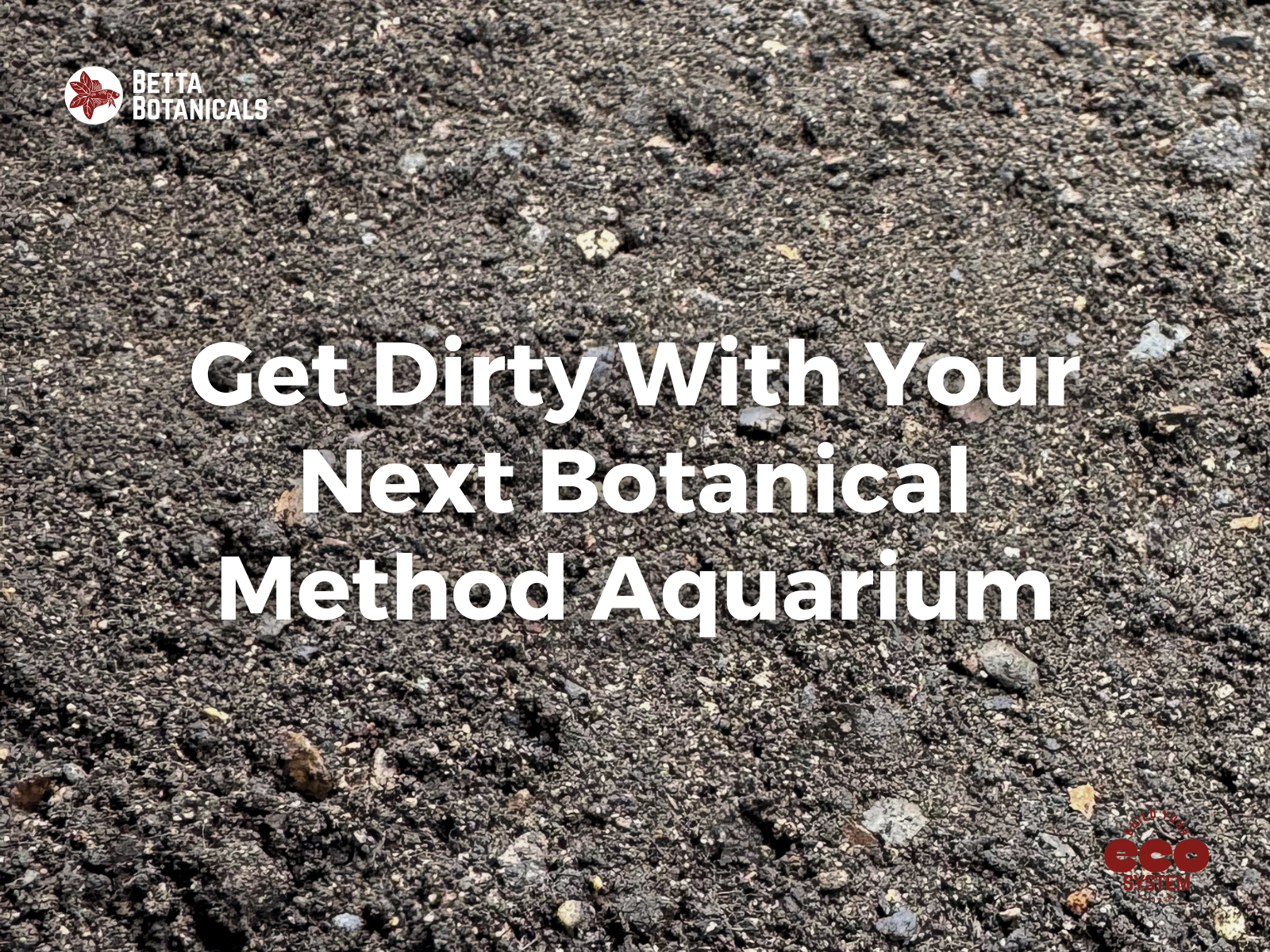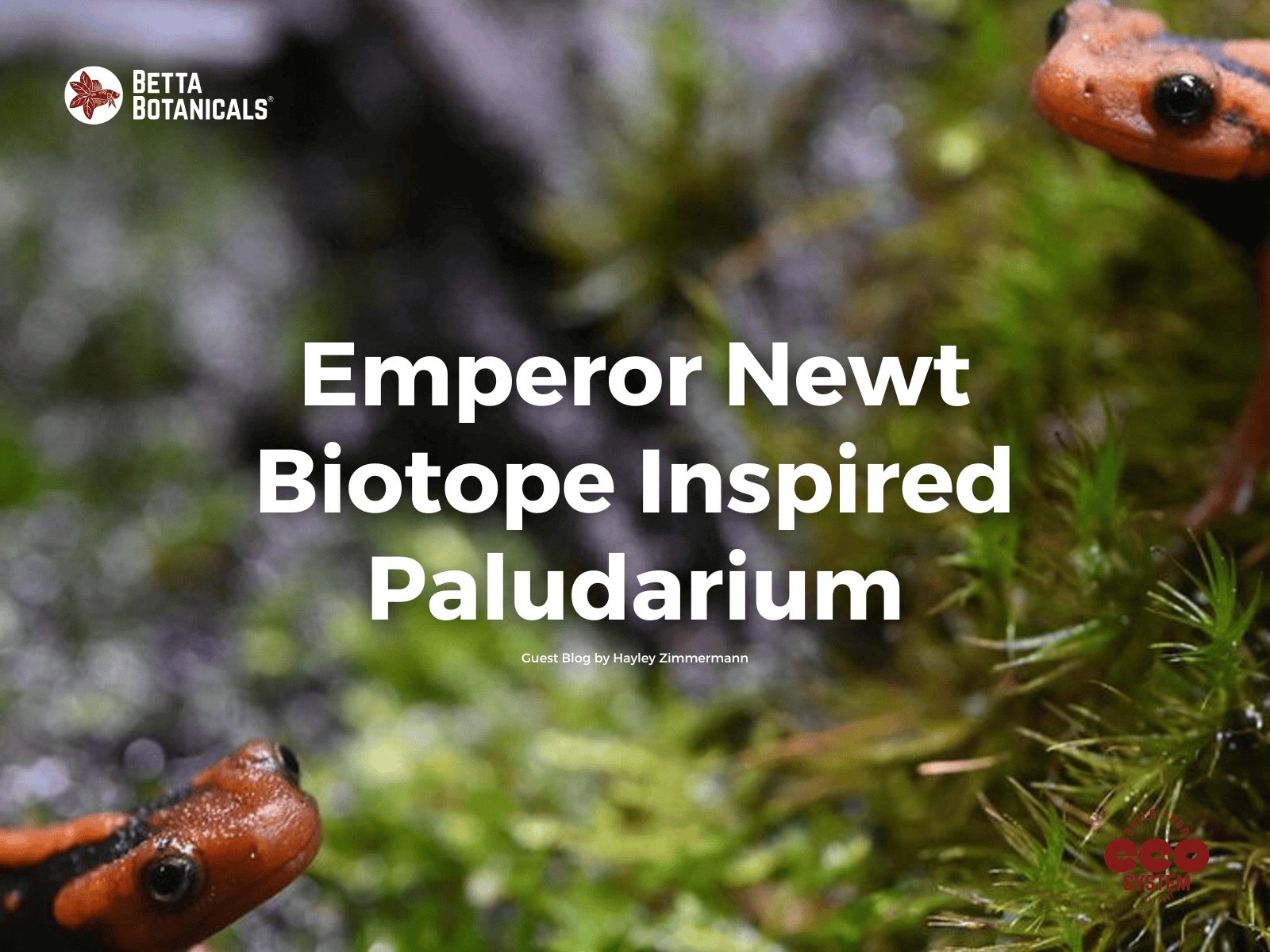Defining the Botanical Method Aquarium: Ecology, Function, and an Unified Identity
For decades, aquarists experimenting with leaf litter, seed pods, and natural materials in order to replicate Mother Nature, have sought a way to describe what they do. At first, it was simply referred to as a "blackwater aquarium" or a "natural aquarium” describing their work purely based on how the aquarium looked. Tinted. In 2015, the phrase "botanical style aquarium" emerged, emphasizing its distinct appearance, and use of dark, organic, and earthy-looking botanicals, often covered in biofilms. Scott and Johnny of Tannin Aquatics paved the way–verbaige, and methods–behind how we discuss these ecosystems today. It was considered a style for years, creating an association with the other styles of aquascaping (Dutch, Brazilian, Iwagumi, etc.), curating the look based on a set of criteria.
Yet, as our understanding of these natural systems has deepened, it became increasingly clear that this wasn’t just an aquascaping style. It is a methodology—one rooted in the processes of nature.

It was Never a Style, it was a Method
The word style carries implications of aesthetic priority over function. Aquascaping, for example, is largely about designing visually pleasing layouts—composition, color balance, and focal points. Balanced textures and fish size are emphasized, with priority placed on the visual appearance and values of the hobbyist. However a botanical method aquarium doesn’t function like a traditional aquascape. It isn’t about maintaining a static, curated look.

Instead, it’s evolving. Prioritizing ecological process which rely on natural decomposition, microbial activity, and environmental succession. It’s about collaboration with nature, not control over it. I often will explain that keeping a botanical method aquarium is to curate the ecosystem for the fish, and not for the visual pleasure of the owner. It places the needs of the fish, microfauna, and plants–their interactions– above the desires of the one maintaining the ecosystem.
That’s why we abandoned the word ‘style’ back in 2021, no longer calling it a style—we call it a method.

meth·od·ol·o·gy
/ˌmeTHəˈdäləjē/
(noun) - A system of methods used in a particular area of study or activity.
"In the aquarium hobby, we love the idea of subscribing to an approach to keeping our tanks, don't we? There is something very satisfying and comforting to many hobbyists about having a sort of “roadmap” to follow in order to achieve a desired, perhaps predictable set of results.
Over the years, there have been many “methods” and “techniques” to accomplish different things in the aquarium hobby. Some have been ridiculously successful and very easy to replicate. Some things that we have labeled as "methods" over the years were really just ways to sell product. Others were legitimate methodologies which anyone can utilize to achieve more predictable results.
IS the “botanical-style” aquarium a "method?"
I believe that it is definitely a method, sure.
And it's quite a different method than most any other we play with in the hobby. It's different, because the aesthetics, although fantastic, are not the primary purpose of this approach.
The "big idea" is to foster a diverse and highly functional ecology within the aquarium through the use of a diversity of natural materials.
This is based upon the belief that an aquarium is a miniature closed ecosystem, subject to the influence of external inputs and outputs.
I believe that an aquarium can utilize all sorts of natural materials to not only create a “structural habitat”, but to encourage and foster the growth of biofilms, fungal growths, and other beneficial microfauna.
In fact, you could say that just about everything we do with what we used to call a botanical-“style”aquariums is optimized to foster an aquatic ecology.
Despite their impermanence, botanical materials function as diverse harbors of life, ranging from fungal and biofilm mats, to algae, to micro crustaceans and even epiphytic plants. Decomposing leaves, seed pods, and tree branches make up the substrate for a complex web of life which helps the fishes that we're so fascinated by, flourish.
Yeah, it’s a methodology!” -Scott Fellman, Tannin Aquatics
What is the Botanical Method Aquarium?
A botanical method aquarium is an ecological microcosm where natural materials—leaves, bark, seed pods, and wood—fuel biological processes that can influence water chemistry, govern microbial colonization, and nutrient cycling. It closely mimics wild aquatic habitats, where allochthonous inputs (materials from terrestrial environments) shape the underwater world.

Unlike traditional aquarium approaches, which focus on pristine clear-water aesthetics and mechanical filtration, the botanical method leans into the natural processes of decomposition, detritus accumulation, and microbial proliferation. The aquarium becomes the largest filter. We do our best to foster this ecology within the bounds of a closed system, the aquarium.

Let’s Break it Down:
-
Allochthonous Inputs – Leaves, twigs, seed pods, and organic detritus serve as fuel for microbial activity, creating a self-sustaining, ever-evolving environment with great dictation of that biome by the forest canopy above.
-
Biofilms, Fungi & Decomposition – Instead of being removed, these natural processes are our holdfast, as essential components of the ecosystem. With layers of materials accumulating over long periods.
-
Water Chemistry Alteration – Tannins, humic acids, and other compounds from botanicals influence pH, can reduce harmful bacteria, and provide environmental stability through reintroduction of humic substances.
-
Ecologically-Driven Approach – Rather than constantly intervening, aquarists observe and hand off control to nature’s processes. We don’t abandon the methods of water exchanges and fish feeding, but we do question the necessity of applying a toothbrush to the hardscape.
-
Time – Instead of resetting aquariums with each new setup, season, or idea, many die-hard enthusiasts layer new botanicals and new substrates over old substrate beds, mimicking the seasonal succession in nature.

The Importance of an Unified Identity
The botanical method isn’t a fad—it’s a scientific approach to aquarium keeping that has taken years to document, refine, and understand. As more aquarists adopt this method, clarity in terminology becomes essential. By using the term "Botanical Method Aquarium," we create a unified identity for this practice, setting it apart from mere aesthetic choices and placing it firmly among the ranks of Takeshi Amano’s Nature Aquariums, Diana’s Walstad Method, and all the different variants of planted aquascapes. We as hobbyists have a responsibility not to muddy the waters around the definition and should avoid calling them botanical tinted ecosystems, tinted ecosystem tanks, or botanical style aquariums. I’m going to go out on a limb here, calling out the quite popular ‘Ecosystem Aquarium’ that we see created by mainstream hobbyists with lush green plants, white sand, and fish. They’re quite beautiful – but how can we call these ‘ecosystems’ when we ignore botanicals, detritus, and the layers of the food web they cultivate?

This method can exist across multiple biomes—South American igapó, Southeast Asian peat swamps (gambut), African flooded grasslands—but it is defined not by its look, but by its function.
Why Defining the "Botanical Method Aquarium" Matters
By naming and defining this method, we are preserving its integrity. This is the way to work with nature. It prioritizes long-term ecological stability over short-term aesthetics. It challenges traditional aquarium conventions and fosters a deeper understanding of how natural systems can and should operate. When I bring in new ambassadors to Betta Botanicals I often explain to them that their aquarium is about to evolve into an episode of National Geographic. By leveraging the term Botanical Method Aquarium, they help stream line the roadmap of educational reasources on how to build an ecosystem using these methods.
We’re not just creating the look of an ecosystem. We’re simulating their natural processes.

There’s Nuances to These Choices
As a Botanical Method Aquarist since 2019, there are a few common aquarium practices we do not abandon. We still set up the aquarium with a heater, filter, substrate, plants if you want, a lid if you want, and a light. We practice 20%-ish water exchanges every 2-ish weeks, scraping the glass so we can see the microcosm we are fostering. We feed our fish every day – but opt for more natural fish foods made with ingredients we can pronounce and as close to the wild diets our fishes. We trim the plants as they grow, and we clean out clogged filter sponges as they become engulfed in biofilms and detritus. We break off from the branches of Blackwater Aquariums and Biotope Aquariums by not targeting a low pH, opting for botanicals and plants from multiple continents, and recreating a natural functioning ecosystem that is both beneficial to your fish and a statement ecosystem of your fish room.

A Movement Rooted in Nature
By adopting consistent terminology, we ensure that the philosophy, science, and practice of this method remain clear. (I’m literally rotfl over the number of puns in this post) We embrace what nature provides—detritus, fungi, microbial films—not as contaminants to remove, but as essential pieces of an ecosystem. We adjust the timescale of our expectations on “my tank should be cycled on X date”, and we begin to understand that Mother Nature will not run or produce the same result twice. A prime example of this is the growth and persistence of biofilms in the aquarium, often appearing when we haven’t done anything new to the ecosystem, and well after the initial goo-phase. We are the ones who must adjust to the seasonal changes in our aquariums.
This is not just a style—it’s a method. Leaves were never a phase, they’re a lifestyle.
And it’s one that lets natural processes build the ecosystem.








Inspire your friends:
Understanding Biotope Aquariums: A Journey into Natural Habitat Replication
Creating an Aesthetically Functional Paludarium for Emperor Newts